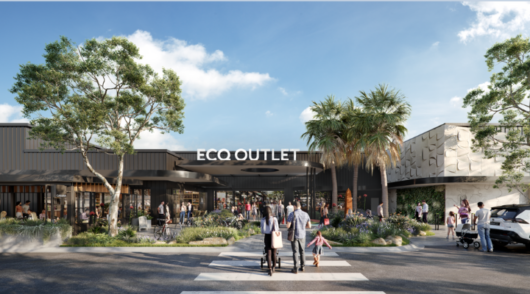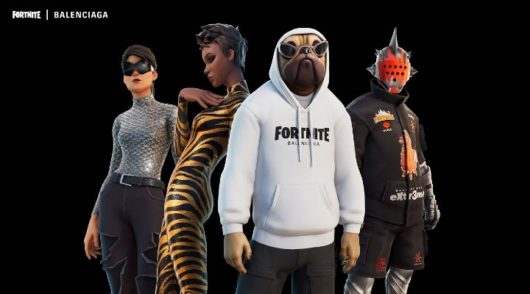 When NRF CEO and president, Matthew Shay, asked Walmart CEO Doug McMillon, about the so-called ‘retail apocalypse’, McMillon quoted American writer, Mark Twain, who once quipped, “The reports of my death are greatly exaggerated.”
When NRF CEO and president, Matthew Shay, asked Walmart CEO Doug McMillon, about the so-called ‘retail apocalypse’, McMillon quoted American writer, Mark Twain, who once quipped, “The reports of my death are greatly exaggerated.”
“I think to say that [retail is dying] is to underestimate the creativity and ability to execute of the people in this room,” McMillon told the audience on 15 January.
“The person who ultimately decides whether we’re here or not is the customer. It’s the busy family. It’s the people who are making choices all the time about where they want to shop. They’re very rational…ultimately, they make choices about price, assortment and experience.”
But that doesn’t mean retailers can afford to sit back and relax, as McMillon made clear in his discussion of Walmart’s ongoing digital transformation.
“What’s happening in our business is that we’ve got bricks-and-mortar stores we want to make better…including making them more digital. And we’ve got an e-commerce business we want to build,” he said, in reference to the company’s 2016 acquisition of Jet.com.
“We’ve got a lot of work to do in e-commerce just to nail the fundamentals. We’re trying to catch up quickly, but there’s a lot we can improve.”
Investment in ecommerce is just one part of this transformation, as the company is also rethinking the way it compensates and trains its employees, McMillon added.
“Everybody here knows that [retail] is a people business. The way customers feel when they leave your store, website, or app determines how fast they’re going to come back. There’s a piece of humanity here that matters,” he said.
This month, Walmart will pass some of its savings from the recently passed tax plan onto staff in the form of benefits and skills development, as well as wage increases from US$9 to US$11 per hour and one-time bonuses of between US$200 and US$1,000.
“[We] want the people who are on the frontlines interacting with customers to know how much we care about them and value their work,” he said. “The bet we’re making in the long-term is that people…will ultimately be the way we win.”
Not dying, but changing
McMillon isn’t the only one calling the ‘retail apocalypse’ fake news. Senior analyst for Oppenheimer & Co Brian Nagel said the 2017 holiday sales season was one of the strongest in recent memory in the US, thanks to the low rate of unemployment and rising home values, stock prices and consumer confidence.
“All of this means more spending,” he said, noting that investors have been “relieved, and frankly, kind of giddy” about the sales figures from December.
“The concern out there [on Wall Street] has been the disintermediation of traditional retail by online commerce, specifically Amazon. I think what we saw coming out of the holiday…was that a lot of traditional retailers…really held their own. What does that mean? Is there sustainability? It seems that there is.”
At the same time, former vice chair for GE, Beth Comstock, said retail is undergoing a paradigm shift similar to the one that film and television underwent with the rise of streaming video.
“You could say that [change] has been true for the last 25 years, but something different is upon us now,” Comstock said, noting the changing way consumers want to shop.
“We don’t know what the future is going to look like…transformation means you’re never done. Volatility is the new normal,” she said.
She added that while retailers may be tempted to put everything on hold to “figure one thing out” at a time, it’s not an option anymore.
“Therein lies the challenge. You want to pick one thing [to innovate], but you have to do a number of different things simultaneously and be ready to scale things up when you get the data that shows your customer wants it,” Comstock said.
Customers will define the future
The most significant change retailers need to understand, according to Katherine Cullen, NRF’s director of retail and consumer insights, is that customers are defining the future of the industry.
“There has been a shift from brands pushing products and trends to consumers telling brands and retailers what they want and retailers responding,” Cullen said. “It’s the responsibility of everyone [now] to know the consumer mindset.”
This can be seen in the strategic direction of retailers such as US-based pharmacy chain, CVS, which is reformatting some of its stores to serve the specific needs of Hispanic customers and others to provide more targeted beauty offerings.
The retailer is also responding to of-the-moment consumer sentiment through its pledge to stop materially altering and retouching the product and marketing imagery customers see in stores.
“There will be a CVS ‘beauty mark’ to indicate that [images have not been retouched],” said Helena Foulkes, president of CVS pharmacy.
“We’re asking suppliers to do so as well. Our goal by 2020 is to have every product either have the CVS ‘beauty mark’, or a [statement] that the product has been digitally altered.”
As Foulkes said, trust and confidence are the most important things to consumers today.





